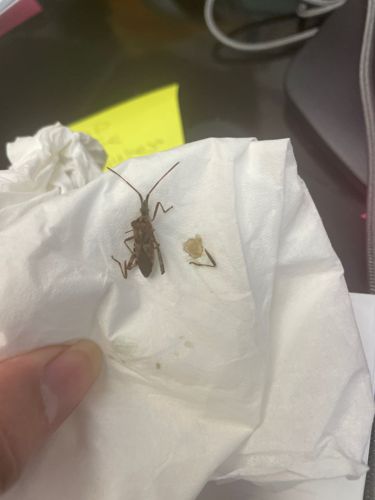Leaf-footed bug
Scientific Name: Family Coreidae (likely Leptoglossus or similar genus)
Order & Family: Hemiptera, Coreidae
Size: Typically 1/2 to 1 inch (12-25 mm) in length, though size can vary by species.

Natural Habitat
Found on various plants, especially those that produce fruits or seeds, including gardens, agricultural fields, and natural areas. They are common in warm and temperate regions.
Diet & Feeding
Herbivorous, feeding on plant sap, particularly from the fruits, seeds, and stems of plants. They use piercing-sucking mouthparts to extract nutrients.
Behavior Patterns
Adults and nymphs feed by inserting their proboscis into plant tissue. They are known to congregate on host plants. Some species are attracted to artificial lights at night. Females lay barrel-shaped eggs, often in rows on plant stems or leaves. Their distinguishing feature is often the flattened, leaf-like expansions on their hind legs.
Risks & Benefits
Risks: Considered agricultural pests as they can cause significant damage to a wide range of crops, including fruits (e.g., citrus), vegetables (e.g., tomatoes), and nuts (e.g., pecans) by puncturing and feeding on developing parts, leading to malformation, premature drop, or reduced quality. Benefits: In natural ecosystems, they are part of the food chain, serving as food for various predators.
Identified on: 11/8/2025